In today’s environmentally conscious world, businesses are increasingly recognising the importance of sustainable office fitouts. These eco-friendly workspaces not only reduce environmental impact but also offer significant economic and social benefits. Sustainable office fitouts involve the use of environmentally responsible materials, energy-efficient systems, and design strategies that prioritise both the planet and employee well-being.
The demand for green workspaces is on the rise, driven by a growing awareness of climate change, resource scarcity, and the need for healthier work environments. By implementing sustainable practices in office design, businesses can reduce their carbon footprint, lower operational costs, and create spaces that enhance employee productivity and satisfaction.
In part one of this two-part comprehensive guide, we’ll explore the key elements of creating a green workspace, from sustainable materials to energy efficiency, water conservation, and waste management. Let’s dive into the world of sustainable office fitouts and discover how you can transform your workplace into an eco-friendly haven.
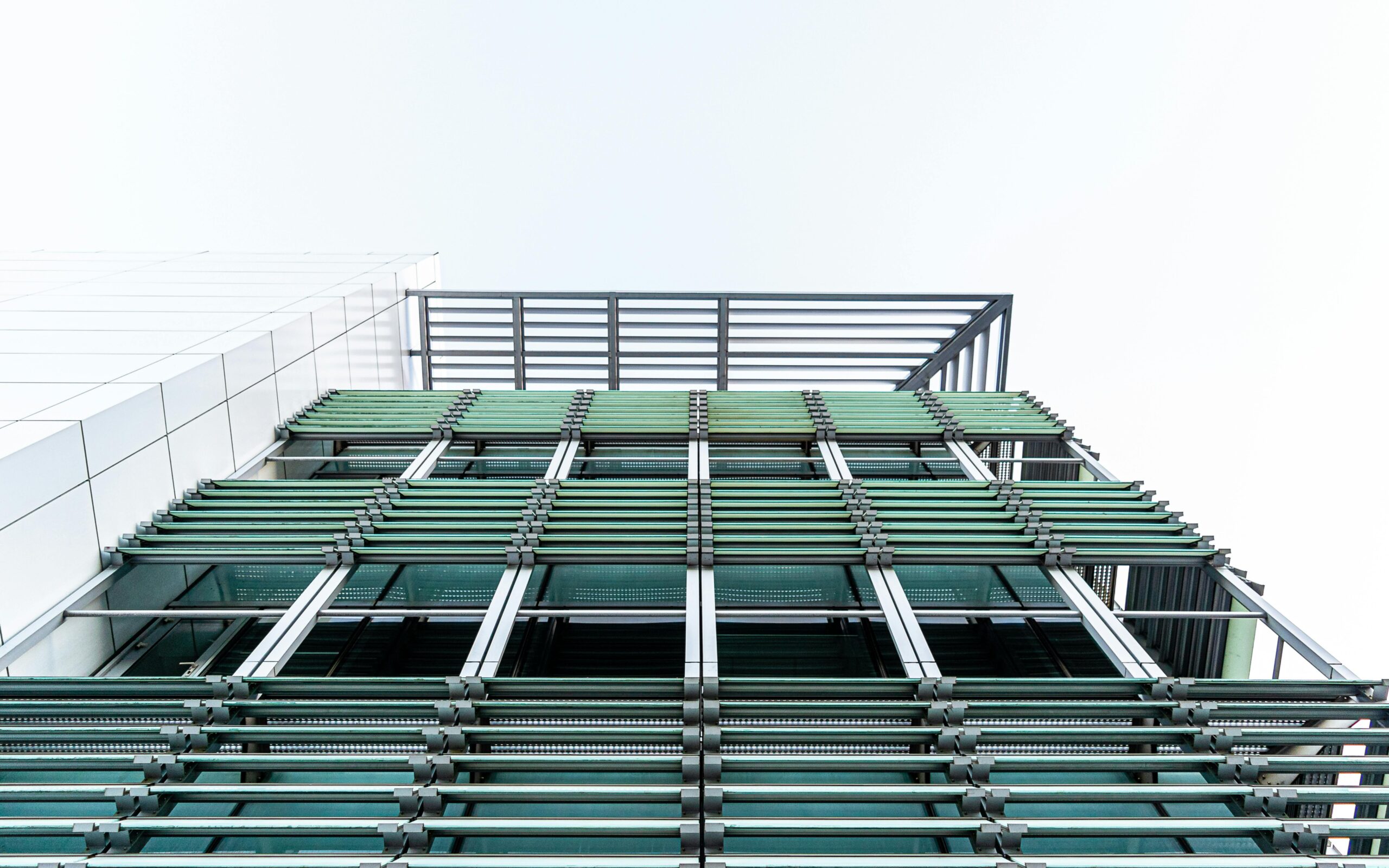
The foundation of any sustainable office fitout lies in the careful selection of eco-friendly materials. These materials are characterised by their low environmental impact, durability, and ability to be recycled or reused at the end of their lifecycle.
Popular sustainable materials for office fitouts include:
By choosing these materials, businesses can significantly reduce their environmental footprint while creating aesthetically pleasing and functional workspaces. For example, recycled content materials divert waste from landfills, while low-VOC paints improve indoor air quality by reducing harmful emissions.
When sourcing materials, it’s crucial to consider their entire lifecycle, from extraction and manufacturing to disposal. Look for certifications such as FSC (Forest Stewardship Council) for wood products and Cradle to Cradle for various building materials to ensure responsible sourcing.
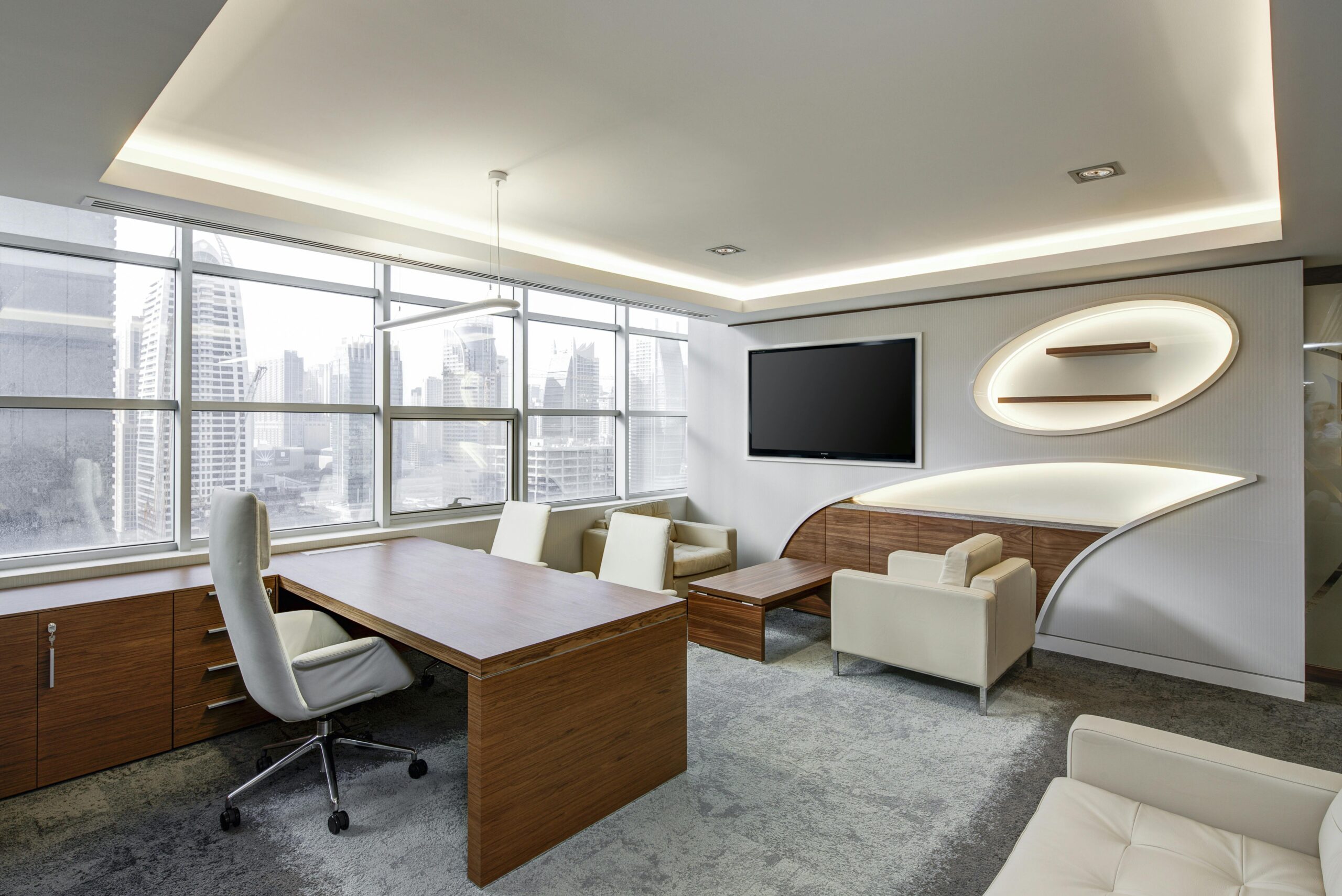
Energy efficiency is a critical component of sustainable office fitouts, offering both environmental benefits and significant cost savings. By implementing energy-efficient strategies, businesses can reduce their carbon emissions and lower their utility bills.
LED lighting is a cornerstone of energy-efficient office design. These lights consume significantly less energy than traditional incandescent or fluorescent bulbs while providing high-quality illumination. LED lights also have a longer lifespan, reducing maintenance costs and waste. When implementing LED lighting, consider the following applications;
Task lighting for individual workstations
LED task lights provide focused illumination for desks and workstations, reducing eye strain and improving productivity. These lights can be adjustable and dimmable, allowing employees to customise their lighting environment.
Ambient lighting for common areas
LED fixtures for general illumination in open spaces, corridors, and meeting rooms create a comfortable atmosphere while significantly reducing energy consumption. Consider using tunable white LEDs to mimic natural daylight cycles and support circadian rhythms.
Accent lighting for decorative purposes
LED spotlights and strip lights can highlight architectural features, artwork, or branding elements, adding visual interest to the office space while maintaining energy efficiency. These fixtures can often be colour-changing, allowing for dynamic lighting scenes.
LED lights can be easily integrated with smart lighting control systems, allowing for automatic dimming and shut-off based on occupancy or daylight levels. This integration further enhances energy savings and provides a more responsive lighting environment for employees.
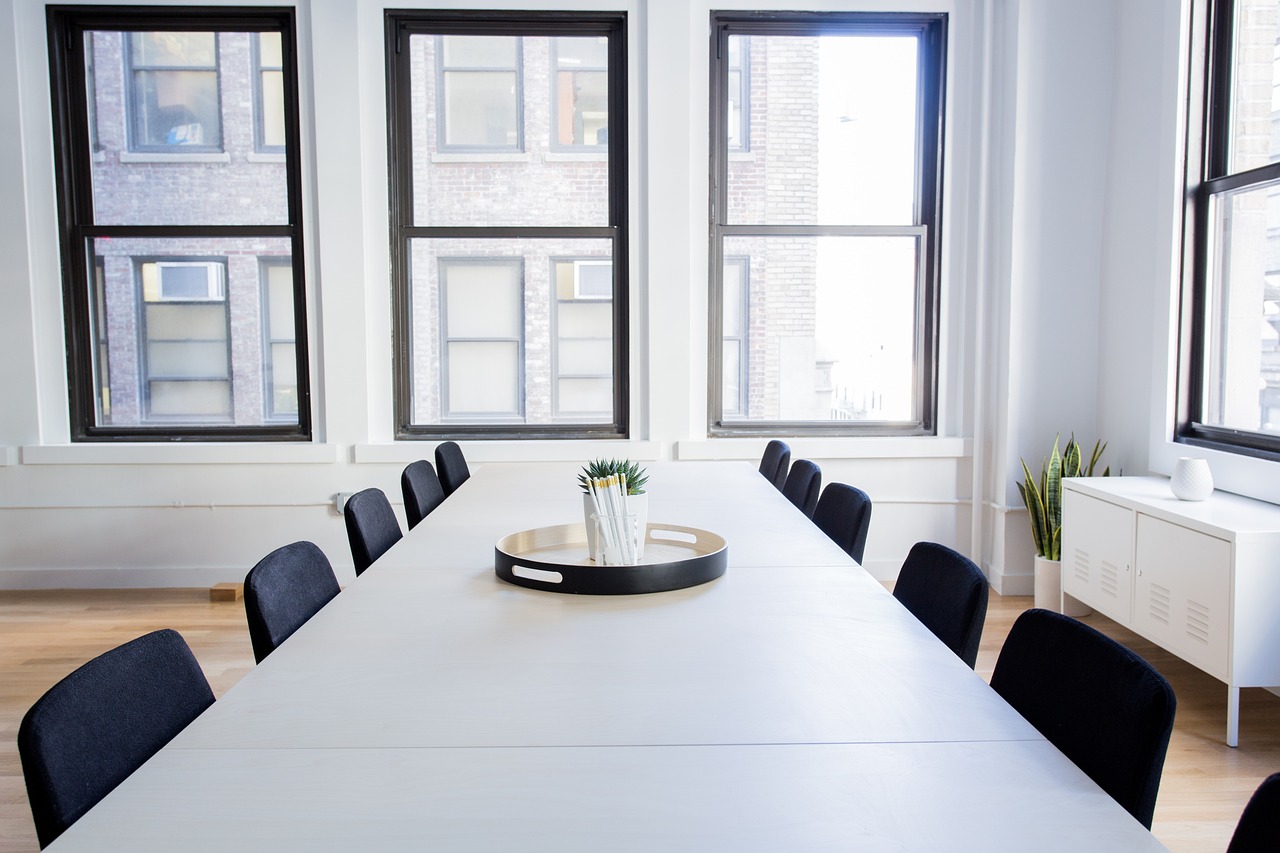
Smart building technology is revolutionising energy management in office spaces. These systems use IoT (Internet of Things) devices and advanced software to optimise energy consumption across various building systems. Key components of smart building technology include:
Automated lighting controls
These systems adjust lighting levels based on occupancy and natural light availability, reducing energy waste and enhancing visual comfort.
Smart HVAC systems
These intelligent systems optimise heating, cooling, and ventilation based on real-time occupancy data and weather conditions, ensuring optimal comfort while minimising energy consumption.
Energy monitoring and analytics platforms
These tools provide real-time insights into energy usage patterns, allowing facility managers to identify inefficiencies and implement targeted improvements.
Occupancy sensors
These devices detect the presence of people in a space, enabling automated control of lighting, HVAC, and other systems to reduce energy waste in unoccupied areas.
By implementing these technologies, businesses can achieve significant energy savings while improving occupant comfort and productivity.

Maximising natural light in office spaces not only reduces energy consumption but also enhances employee well-being and productivity. Strategies for optimising natural light include:
Strategic window placement
Careful consideration of window size, orientation, and placement maximises daylight penetration while minimising glare and heat gain. Proper placement reduces the need for artificial lighting during the day.
Installation of skylights
Skylights bring natural light into interior spaces that windows can’t reach, providing even illumination and reducing reliance on electric lights. They are particularly effective in large, open office areas.
Use of light shelves to reflect sunlight deeper into the space
Light shelves are horizontal or angled surfaces that bounce sunlight up onto the ceiling, distributing light more evenly throughout the room. This technique can significantly increase daylight penetration and reduce glare.
Implementation of glass partitions to allow light to penetrate interior areas
Glass partitions allow natural light to flow freely between different areas of the office, creating a brighter and more open environment. This promotes visual connection and reduces the need for artificial lighting in enclosed spaces.
When designing for natural light, it’s important to balance daylighting with potential glare and heat gain issues. This can be achieved through the use of adjustable shades, tinted glass, or dynamic glazing technologies.
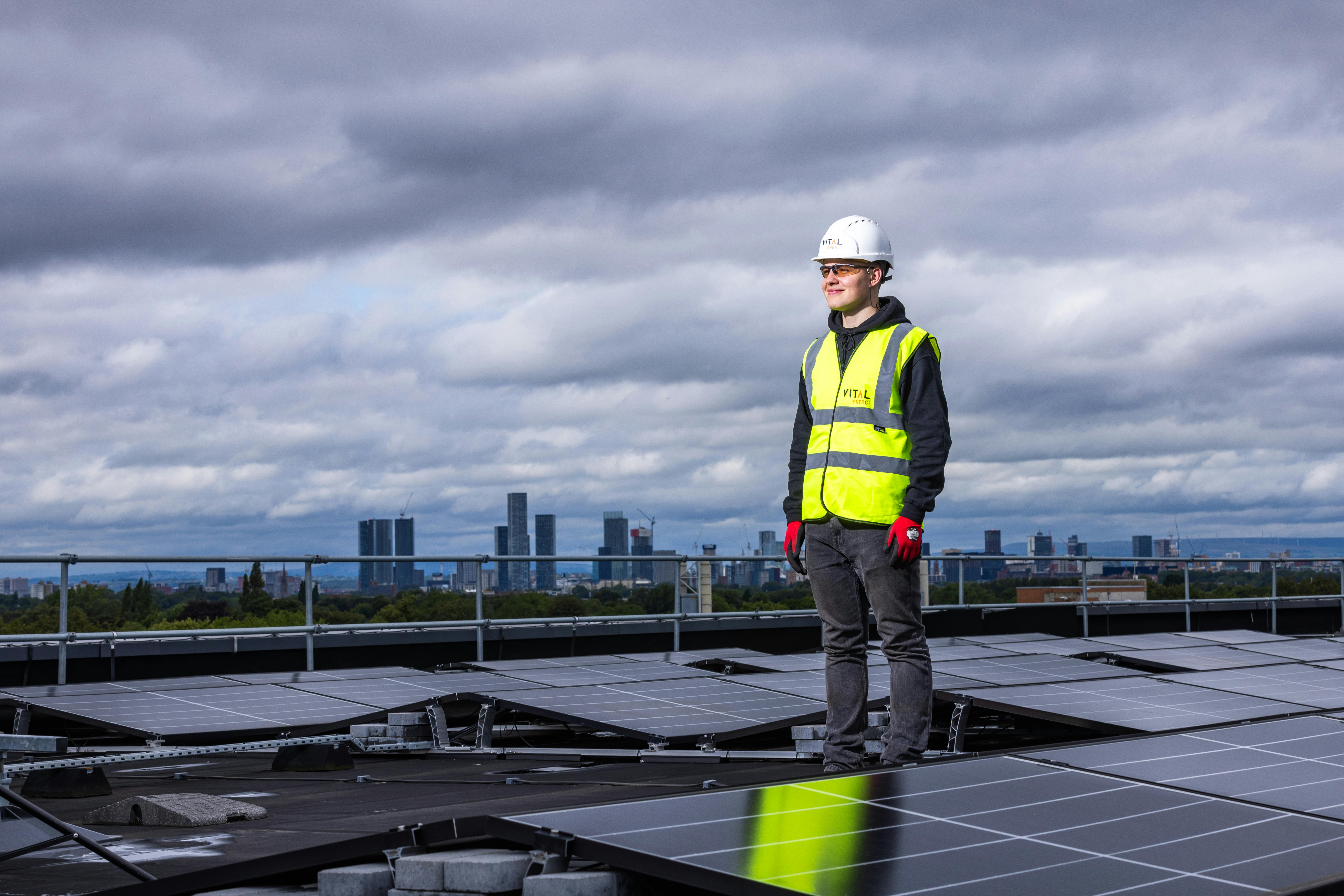
Integrating renewable energy sources into office buildings is a powerful way to reduce reliance on fossil fuels and decrease carbon emissions. Options for renewable energy in office settings include:
Rooftop solar panels
Solar panels convert sunlight directly into electricity, providing a clean and reliable energy source for powering office equipment and lighting. They are particularly well-suited for buildings with large, unshaded roof areas.
Geothermal heating and cooling systems
Geothermal systems tap into the earth’s stable underground temperature to provide efficient heating and cooling for office spaces. They offer consistent performance year-round and can significantly reduce energy consumption compared to traditional HVAC systems.
Participation in community solar projects or green power purchasing programs
These programs allow businesses to support renewable energy development without directly installing renewable energy systems on their property. They provide a convenient and cost-effective way to reduce their carbon footprint and support the transition to a cleaner energy grid.
When considering renewable energy integration, conduct a thorough cost-benefit analysis and explore available incentives or tax credits to maximise the return on investment.
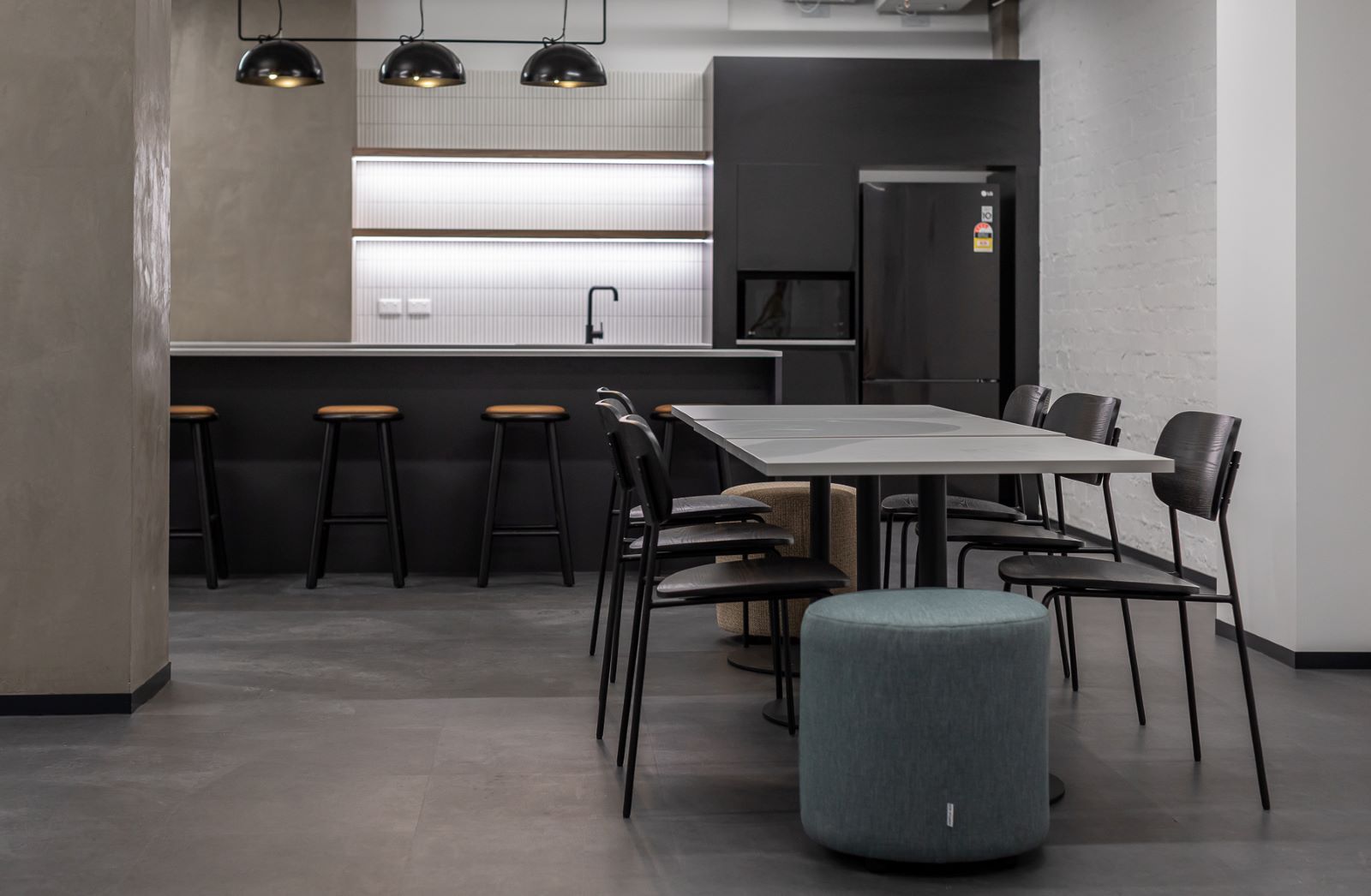
Water conservation is an often-overlooked aspect of sustainable office fitouts, but it’s crucial for reducing overall environmental impact and operational costs. Effective water conservation strategies include:
Installation of low-flow taps and water-efficient toilets
These fixtures significantly reduce water usage without sacrificing performance, helping to lower water bills and conserve resources.
Implementation of rainwater harvesting systems
Rainwater can be collected and stored for non-potable uses (i.e. not safe as drinking water) like irrigation and toilet flushing, reducing reliance on municipal water supplies.
Use of greywater recycling for non-potable applications
Greywater, like rainwater, such as water from sinks and showers can be treated and reused for toilet flushing or irrigation, further reducing water consumption.
Regular maintenance to prevent leaks and water waste
Addressing leaks promptly and implementing a regular maintenance schedule can prevent significant water loss and ensure optimal efficiency.
By implementing these measures, businesses can significantly reduce their water consumption and associated costs while demonstrating their commitment to environmental stewardship.
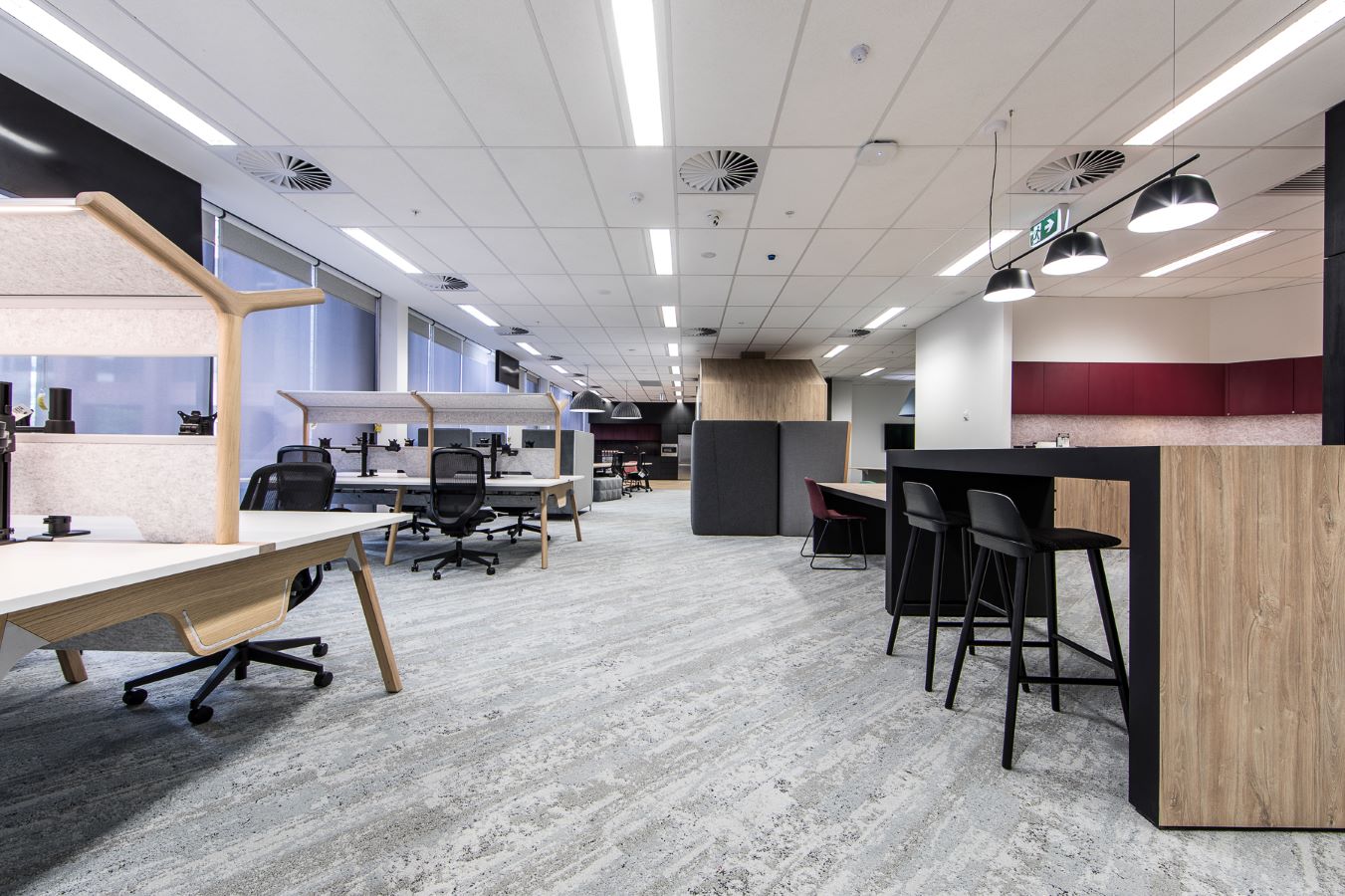
Maintaining good indoor air quality is essential for employee health, comfort, and productivity. Strategies for improving indoor air quality in office spaces include:
Use of low-emission materials and finishes
Selecting materials like paints, adhesives, and furniture with low or zero volatile organic compounds (VOCs) reduces the release of harmful chemicals into the air. This minimises indoor pollution and promotes a healthier breathing environment.
Installation of high-efficiency air filtration systems
Implementing advanced air filtration systems, such as HEPA filters, removes pollutants like dust, pollen, and mould spores from the air, improving overall air quality. Regular filter maintenance ensures optimal performance.
Integration of air-purifying plants into the office design
Incorporating plants like snake plants, spider plants, and peace lilies helps to naturally filter and purify the air, removing toxins and increasing oxygen levels. Plants also add a touch of nature to the workspace, promoting well-being.
Implementation of proper ventilation systems
Ensuring adequate ventilation through a well-designed HVAC system or natural airflow helps to circulate fresh air and remove stale or polluted air. Regular maintenance and cleaning of ventilation systems are crucial.
Regular cleaning and maintenance of HVAC systems
Regular cleaning and maintenance of HVAC systems prevents the build-up of dust, mould, and other contaminants, ensuring efficient and clean air circulation.
Monitoring indoor air quality through CO2 sensors and other air quality meters can help businesses identify and address potential issues proactively. This data-driven approach allows for targeted interventions to maintain a healthy and productive workspace.
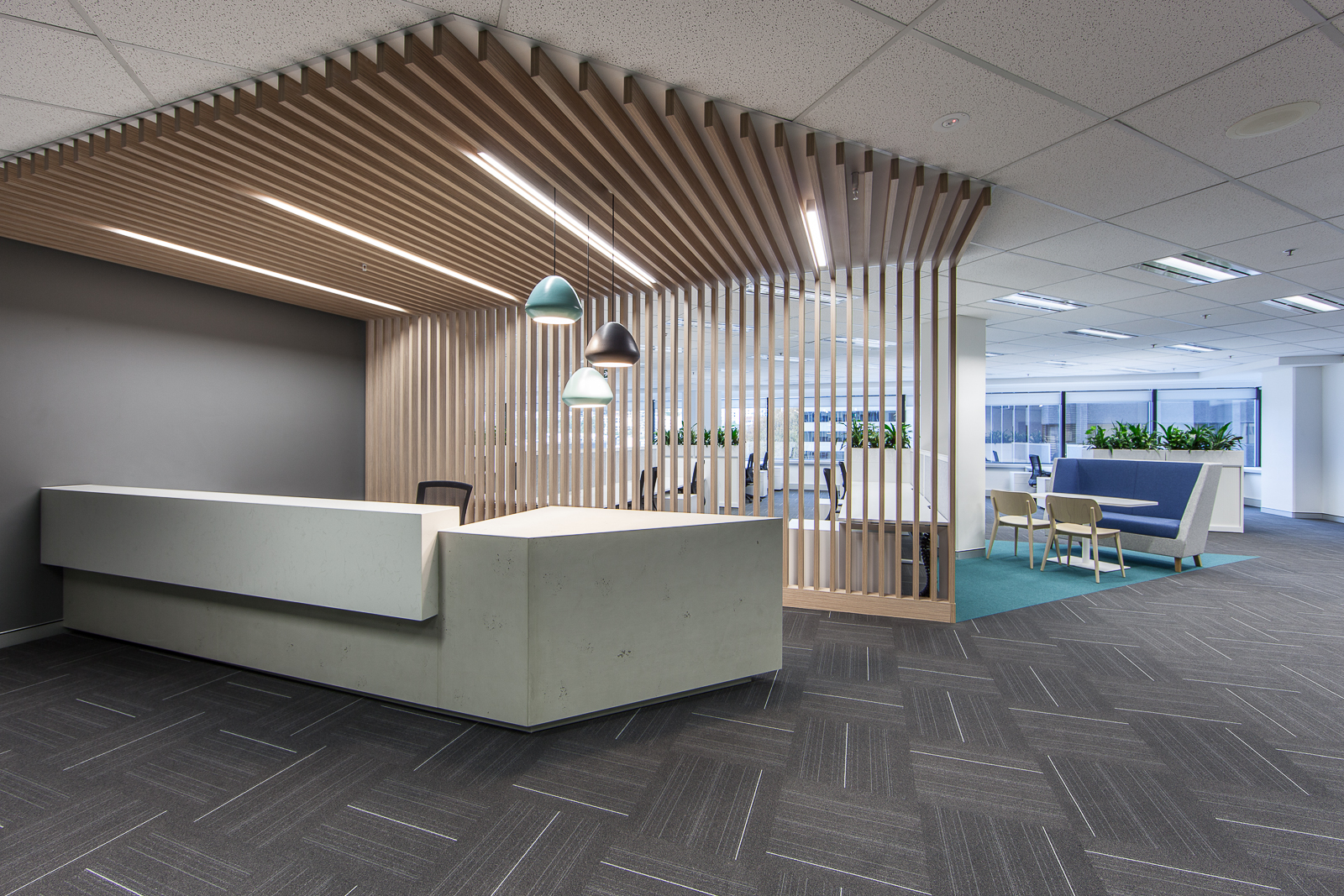
Effective waste management is a crucial aspect of sustainable office operations. Key strategies for minimising waste and promoting recycling include:
Implementation of comprehensive recycling programs
A well-structured recycling program with clear guidelines and accessible facilities encourages employees to properly sort and recycle materials. Educate employees about acceptable materials and provide regular updates on the program’s progress.
Installation of clearly labelled waste sorting stations
Providing designated bins for different types of waste (e.g., paper, plastic, glass, and general waste) makes it easier for employees to sort their waste correctly. Clear and consistent labelling minimises contamination and maximises the efficiency of recycling efforts.
Adoption of composting systems for organic waste
Composting food scraps and other organic waste reduces landfill waste and creates nutrient-rich compost that can be used for landscaping. Partner with local composting services or implement an on-site composting system.
Transition to paperless systems and digital document management
Reducing paper consumption by switching to digital document management systems, online collaboration tools, and electronic communication minimises waste and saves resources. Encourage employees to print only when necessary and use double-sided printing.
Proper disposal and recycling of e-waste
Electronic waste (e-waste) contains hazardous materials and should be disposed of properly through certified e-waste recycling programs. Partner with reputable e-waste recyclers to ensure responsible disposal and recovery of valuable materials.
By implementing these strategies, businesses can significantly reduce their waste output and move towards a more circular economy model.
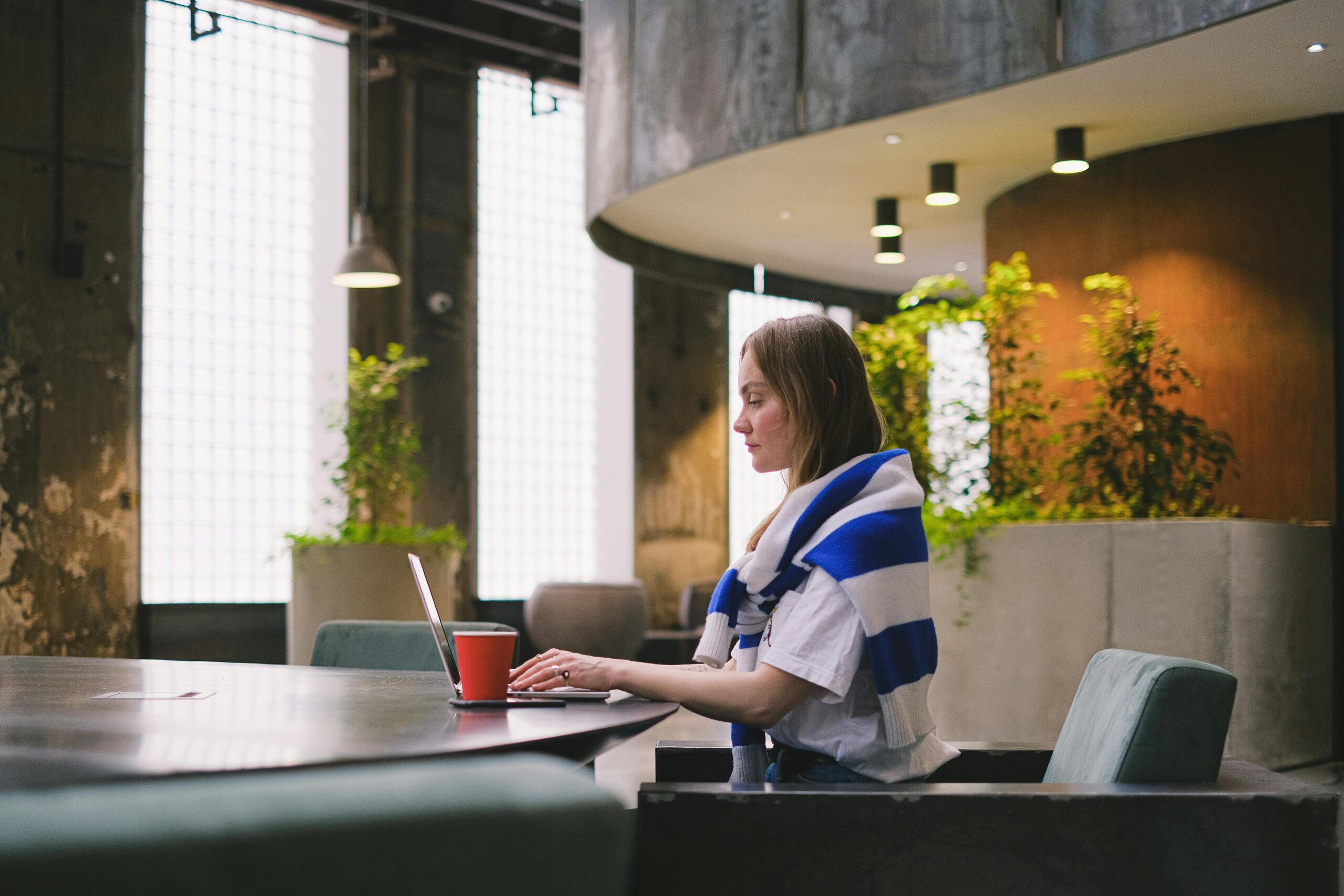
Creating a green workspace through sustainable office fitouts offers numerous benefits, from reduced environmental impact to improved employee well-being and cost savings. By focusing on sustainable materials, energy efficiency, water conservation, indoor air quality, and waste management, businesses can create eco-friendly offices that are both functional and inspiring.
In part two of this series, we’ll explore how to create a productive workplace through design, focusing on elements such as biophilic design, ergonomics, space optimisation, and sustainable transportation.
Stay tuned to learn how these design strategies can further enhance your sustainable office fitout and create a truly holistic green workspace.
Contact Davidson Projects, and we can assist in finding the right design team and consultants to help you design your ideal eco-friendly office space.
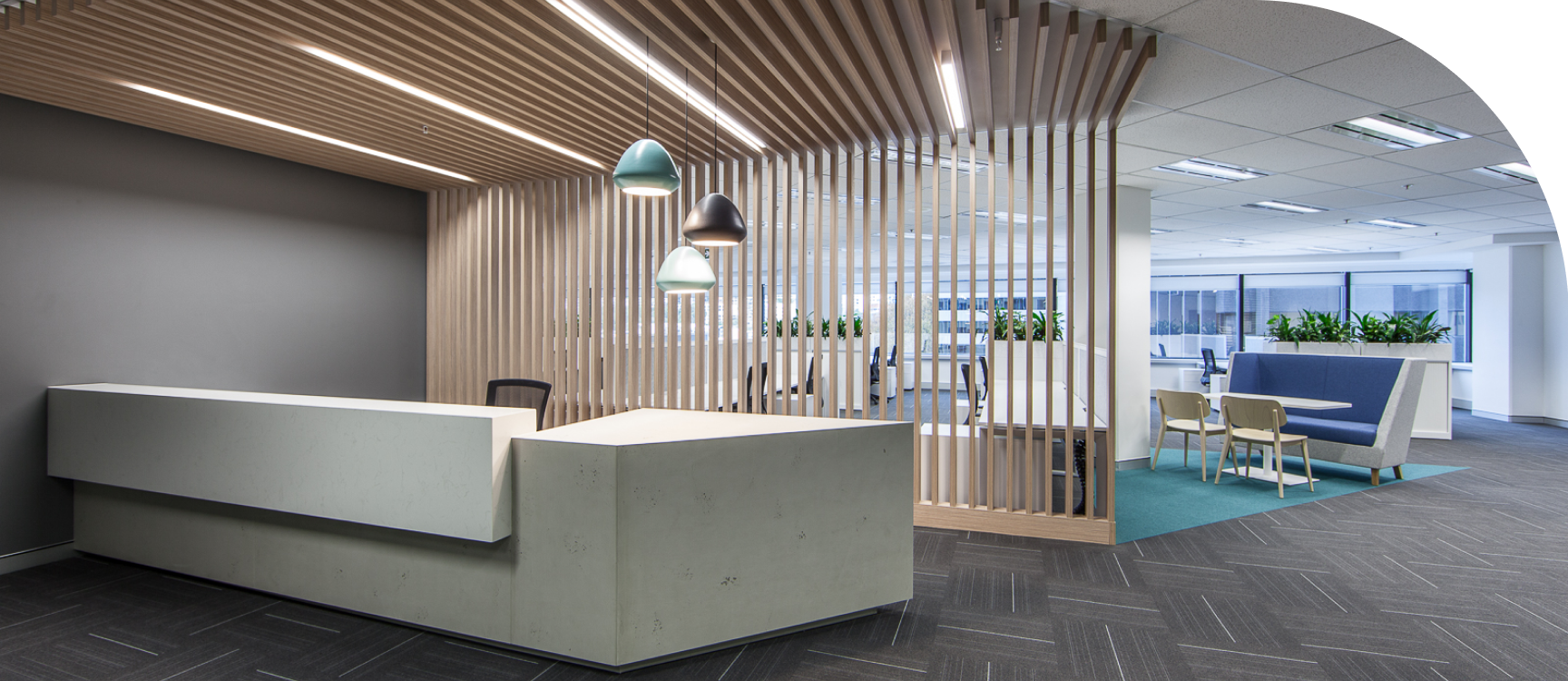
Contact Davidson Projects for office fit outs, office interiors, office refurbishment, base building and make good services or to receive a quote.
Contact Us